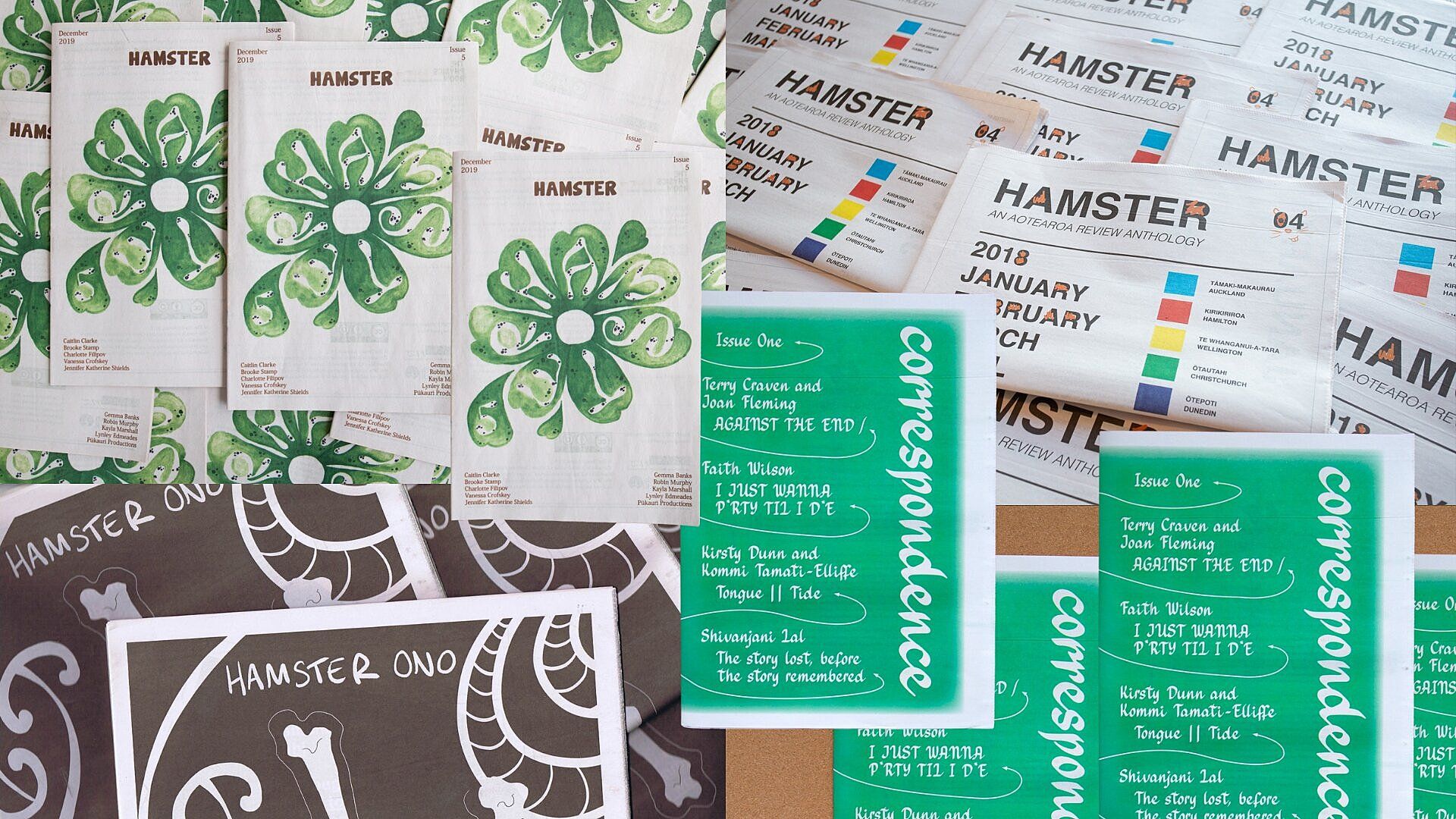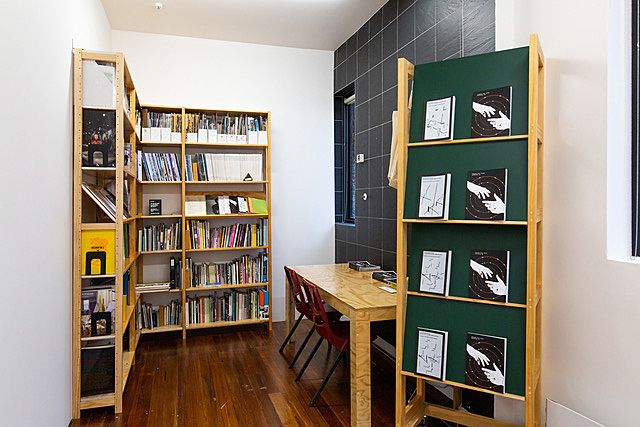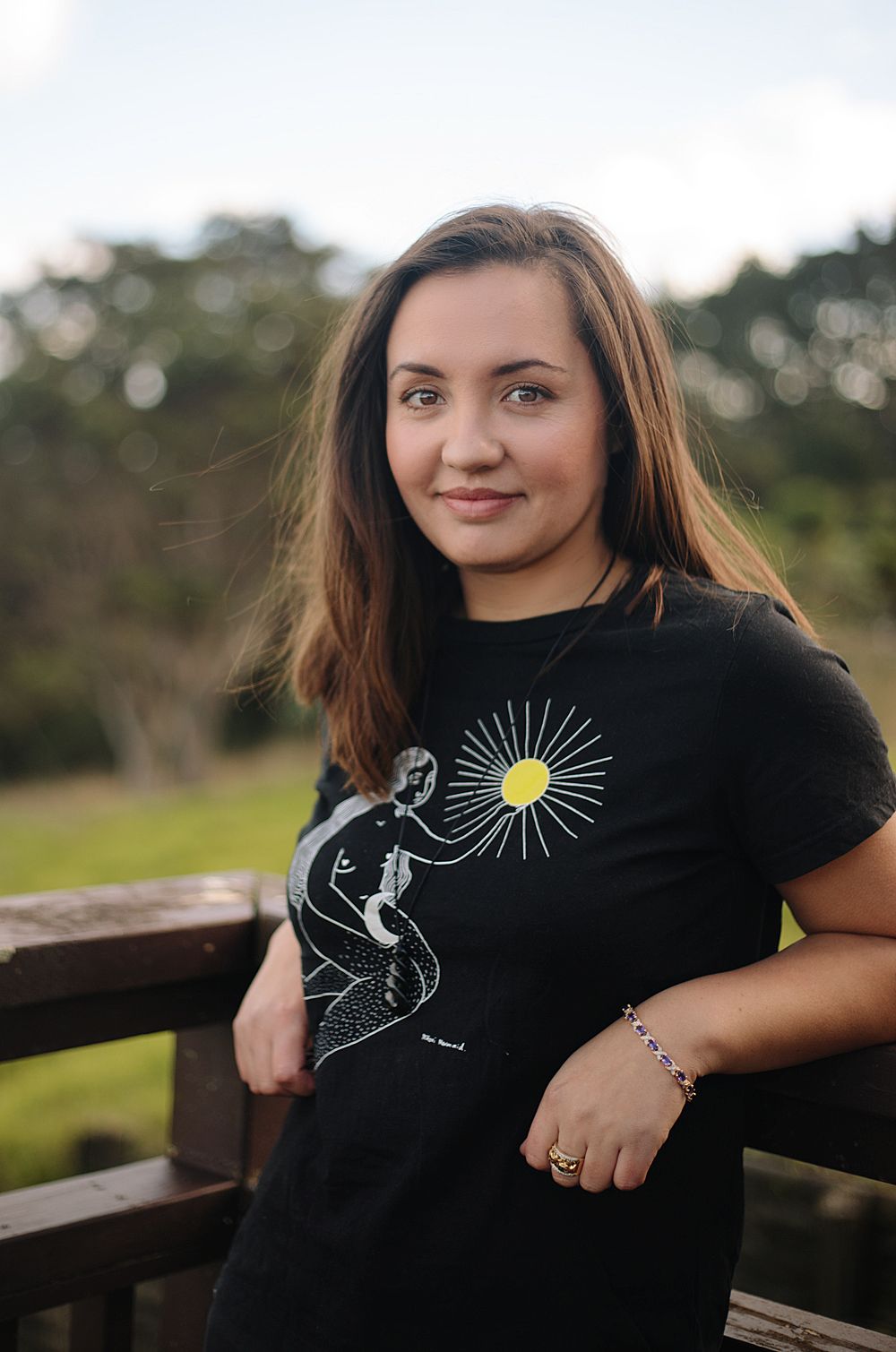Off the Beaten Track with Hamish Petersen
Editor Ataria Sharman talks to Hamish Petersen about their research on decolonial methodologies for Pākehā and Tauiwi arts workers in Aotearoa.
Ataria Sharman met Hamish Petersen, who is the Writing and Publications Co-ordinator at contemporary art gallery The Physics Room, at a meet-up for arts writers hosted by Enjoy Contemporary Art Space and The Pantograph Punch at the end of 2021. Cuba Street dinner hangouts, and a feeling of wanting to know more followed. For this Off the Beaten Track, we venture not into the ‘regions’ but into Ōtautahi to hear what’s been going on in Te Waipounamu.
Ataria Sharman: You were born in Nêhiyâwiwin territory and migrated to Aotearoa. What is your whakapapa?
Hamish Petersen: I was born in a place called Amiskwaciy, at a bend in the Kisiskâciwansîpiy, that I knew as Edmonton, Alberta, Canada, when I lived there. This place is home to Nêhiyaw, Tsuu T‘ina, Siksikaitsitaapi and Métis peoples, and where my Scottish ancestors made their way to in the late 1800s. It’s where my mother was born and where I spent a lot of time in my grandparents’ garden and kitchen until I was eight. Then we moved to Kirikiriroa, near where my dad grew up on a dairy farm in Waikato-Tainui whenua.
AS: How did you end up in visual-arts writing and editing?
HS: I moved to Ōtautahi part-way through high school, just before the 2011 earthquakes, and stuck around to go to university. During my undergraduate studies, I was asked to write for lovely people like The Physics Room and Cheap Thrills journal. I also helped to organise artist projects as part of community arts organisation Ōtautahi Kōrerotia, with artist-curator friends Caitlin Clarke and Māia Abraham (Ngāi Te Rangi, Ngāi Tūhoe, Ngā Rauru), for a few years.
After an internship at The Physics Room, helping establish HAMSTER magazine with Jamie Hanton in 2017 (the predecessor to Correspondence), I was offered the role of Writing and Publications Co-ordinator. I work with various writers, artists, designers and printers to help find language that can extend, challenge and share the work we do in our gallery space, and the creative work going on in our wider community here.
I moved to Ōtautahi part-way through high school, just before the 2011 earthquakes, and stuck around to go to university
AS: What does your day to day look like at The Physics Room?
HP: Alongside our Director, Abby Cunnane, and [former] Assistant Curator, Michelle Wang, I co-ordinate and edit the writing we commission in response to each exhibition. This includes our biannual publication, Correspondence, and a new publication that has grown from our exhibition Heavy trees, arms and legs by Nicola Farquhar and Sorawit Songsataya in 2021. I also facilitate a monthly art-writing group and our occasional pamphlet, Avian Loop, look after our public-access research library, and help distribute our back catalogue of artist books and art-related publishing, as well as selling special publications on behalf of other publishers and artists in our gallery shop (and online).
The role is clearly varied. I work with different crews of people; editing poetry, reviews, essays, experimental texts; planning and administration; talking over ideas with writers and designers; technical printing and distribution processes. But all the threads lead back to telling the stories of our community in the form and context that will help them connect with people further afield.
Alongside our Director, Abby Cunnane, and [former] Assistant Curator, Michelle Wang, I co-ordinate and edit the writing we commission in response to each exhibition
The Physics Room library
AS: How is The Physics Room different from other contemporary art galleries?
HP: I think our context in Ngāi Tahu and Ngāi Tūāhuriri whenua makes for a significant difference from other contemporary art spaces. Ngāi Tahu narratives frame Te Waipounamu as a place of immense activity and exchange; from the drylands of Waitaha to the dark, wet hills of Te Mimi o Tū te Rakiwhānoa. Ōtautahi is a very different city from the other main centres, with enormous infrastructural changes over the past decade that have provided a radically different physical and social environment for artists, writers and arts workers to live and work in. There is very little cheap, accessible physical space in the city centre, so many artists and community spaces are in the suburbs or further out of town. Due to the lack of inner-city housing and the expensive steel-and-glass-clad city centre, artist-run spaces are either short lived, highly site-specific, or both, and are cherished for bringing people together while they are thriving.
The art school and university are in the suburbs, somewhat disconnecting the youth culture from the city. Regardless, there are amazing people sustaining community-centred work in the city and nearby residential red zone [an area of public parkland following the Ōtakaro river to the sea with homes unsafe to rebuild after the earthquakes]. It is also a more affordable place than northern cities for people to rent and travel to places like Te Pātaka o Rākaihautū, Ka Tiritiri o te Moana and Te Tai Poutini. I think this has an impact on the work people make down here. Access to these environments certainly makes life more liveable!
The Physics Room works in this very specific context, connecting people in different communities, and their narratives that are either reified into plaques or hidden amongst the undergrowth. We work hard to keep these local kōrero involved in an ongoing national kōrero of artists and arts organisations.
I think our context in Ngāi Tahu and Ngāi Tūāhuriri whenua makes for a significant difference from other contemporary art spaces
AS: Your Master of Arts (MA) was co-supervised by art history and Māori and Indigenous studies. Why did you choose to study across both disciplines?
HP: My undergraduate degree was in both art history and anthropology. They framed the world and the way culture operates in very different ways, and I found myself without adequate answers to the question of what role settlers, Pākehā, Tauiwi, Tangata Tīriti (etc.) can take up when telling stories about Māori contemporary artists without causing yet more harm. My research was finding ways to do that and keep everyone safe, and allow for the powerful patterns of cultural representation (art-historical writing, curatorial practice, intercultural collaboration) dominated by Pākehā worldviews to change. I was asking what the possibilities were/are of decolonial methodologies for Pākehā/Tauiwi arts workers in Aotearoa. Having two supervisors was about being accountable to multiple perspectives.
AS: What did your research tell you about the role of Tangata Tīriti in our visual arts sector?
HP: My research taught me that we, as Tangata Tīriti, have multiple arrivals of our own, and need to put work into understanding ourselves and our relationships with te ao Māori. For me, that has been about listening and learning. I spent a great deal of time trying to understand the mechanics of coloniality, and reading the work of theorists from Aotearoa and South America to understand how the male and European individual became naturalised as a universally conquering being in a position of control over all others. This ridiculous and violent picture of one worldview being cast as universally superior has always felt impossible and silly from my small and pale genderqueer-feeling body. Finding language for how it developed and continues to function was an important step in understanding how to corrupt it.
This methodology produced a way of working and writing that oriented me and my work towards te ao Māori. Not to consume or own it, but to remain accountable to it
My focus turned to forming and sustaining honest and reciprocal relationships with artists. Working from existing relationships, I was welcomed into kōrero with Ana Iti (Te Rarawa) and Martin Awa Clarke Langdon (Waikato-Tainui, Ngāti Whawhakia, Ngāti Hikairo, Kāi Tahu), who shared their experiences of working between te ao Māori and te ao Pākehā in life and art. Alex Monteith also shared a great deal of time and energy with me to talk about their collaborative work in Kā paroro o haumumu: Coastal Flows / Coastal Incursions, as did my good friend Māia Abraham.
A large part of sustaining these relationships was sharing vulnerability. That included, when I could, calling these artists up and reading them the writing I was producing about their work. This writing took on a constant reflex – between recounting histories, retelling parts of our kōrero, making sense of relational theory, quoting my own diaries, and making poetic responses to artworks – to become a strange kind of autoethnography that followed my own process of being in relation with these people and how that changed me and my work. This methodology produced a way of working and writing that oriented me and my work towards te ao Māori. Not to consume or own it, but to remain accountable to it. I structured my research to depend on my accountability to those whose whenua I live and work in, and the people I work and live with every day.
Instead of a logical statement about methodology, I arrived at more of an orientation. A way of facing this uncertain task of being together. I think this orientation must be guided by the notion that Pākehā and white Tauiwi are not essential for Māori to realise tino rangatiratanga – Kaupapa Māori Research has long demonstrated that – and more often than not, are in the way. While various worldviews are at play here, Tangata Tīriti in the arts might find a way out of coloniality by listening for the aliveness of every being, artwork and place in this whenua. And how this calls for a reciprocity to respond, perhaps, with texts made feral by our entanglement in one another’s worlds. Texts that might keep us coming back to one another, to be undone, and remade, and undone again.
Feature image: Nuanzhi Zheng 郑暖之。


